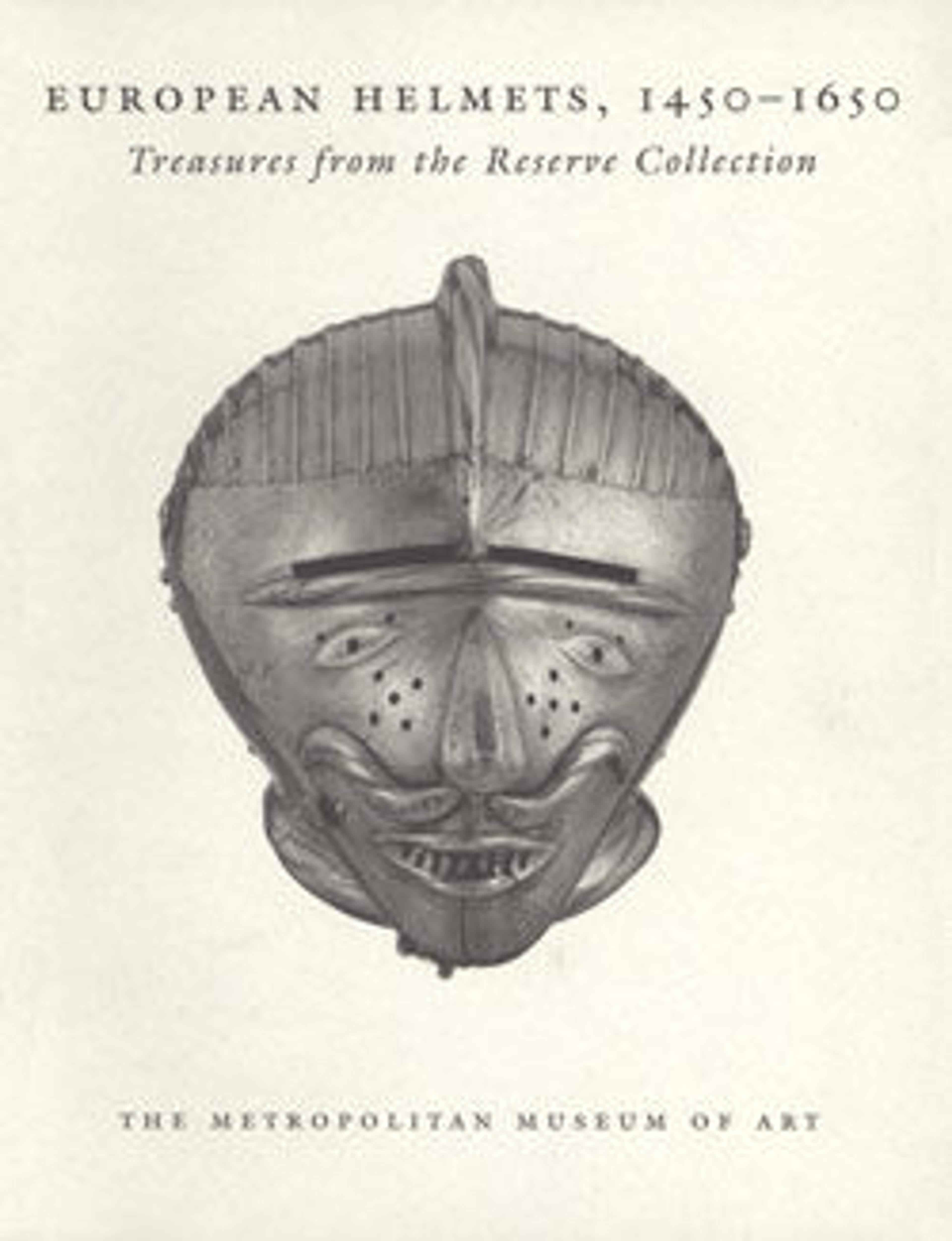Armet with Mask Visor
Helmets fitted with masklike visors were a popular German fashion about 1510 to 1540. Visors forged as humorous or grotesque human masks were often worn in tournaments held during the exuberant pre-Lenten (Shrovetide) festivals, celebrations somewhat akin to modern Mardi Gras. The deep cuts on the left side of this example suggest that it was used in a mock battle, or tourney, fought by groups of horsemen armed with lances and swords. The helmet's powerful sculptural form, technical accomplishment, and imaginitive conception demonstrate the armorer's virtuosity.
Artwork Details
- Title:Armet with Mask Visor
- Date:ca. 1520–25
- Geography:Nuremberg; Innsbruck
- Culture:German, Nuremberg or Austrian, Innsbruck
- Medium:Steel
- Dimensions:H. 10 in. (25.4 cm); W. 9 7/8 n. (25.1 cm); D. 13 7/8 in. (35.2 cm); Wt. 7 lb. 2 oz. (3234 g)
- Classification:Helmets
- Credit Line:Gift of William H. Riggs, 1913
- Object Number:14.25.562
- Curatorial Department: Arms and Armor
More Artwork
Research Resources
The Met provides unparalleled resources for research and welcomes an international community of students and scholars. The Met's Open Access API is where creators and researchers can connect to the The Met collection. Open Access data and public domain images are available for unrestricted commercial and noncommercial use without permission or fee.
To request images under copyright and other restrictions, please use this Image Request form.
Feedback
We continue to research and examine historical and cultural context for objects in The Met collection. If you have comments or questions about this object record, please contact us using the form below. The Museum looks forward to receiving your comments.
